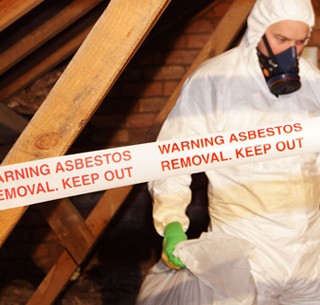Asbestos is a mineral found in nature. It is a metamorphic rock type altered under very high temperature and pressure. The common feature of the minerals in the asbestos group is that they are long, fibrous and crystalline. Asbestos has unique chemical and physical properties. Highly heat, wear and rust resistant, melting point is above 1200°C. It is resistant to acids and bases, has little electrical conductivity, has high elasticity and high hardenability. It has the feature of mixing with cement and similar materials. Asbestos has unique chemical and physical properties.
Fibrous powders is defined as " particles larger than five microns in length, smaller than three microns in width and greater than three times the width of them"; In the 4th Article of the "Regulation on Combating Dust" published in the Official Gazette dated November 5, 2013 and numbered 28812.
As a result of inhaling the fibers scattered in the air, most of the fibers reaching the respiratory tract can be removed by our body's defense mechanisms. Depending on the exposure intensity, exposure time, the structure of the asbestos fiber and individual factors, some fibers accumulate in the lung tissue. It usually takes many years for asbestos-related diseases to appear.
Asbestos-related diseases; accumulation of asbestos fibers in the lung tissue (asbestosis), fluid accumulation in the lung membrane, thickening and calcification of the membrane surrounding the lung, cancer of the membrane surrounding the lungs and abdominal cavity (mesothelioma) and lung cancer.
Reducing environmental and occupational exposures to asbestos should be the primary approach.
Asbestos fibers are very easy to mine. It can be obtained from the mines on earth. Since it consists of overlapping fibers; It is resistant to heat, friction and pressure (stress). Due to its elastic structure, it can be easily bent and twisted. It weak enough to separate fibers by hand. Its properties do not change in fire. It has poor thermal and electrical conductivity. It is resistant to microorganisms. In summary, it can be called an ideal insulation material.
Asbestos is well known and used from antiquity to the present day. In ancient times, there are traces of it being used in food containers, in the construction of ovens and stoves..
It was wrapped with asbestos cloth in order to prevent the corpses of the pharaohs from deteriorating in Egypt between 2000-3000 BC. Traces of asbestos were also found in the catapults used in the Crusades. Later, asbestos found a wide range of uses, from printing banknotes to cigarette filters.
The main industrial areas where asbestos is used are; aircraft, ships, construction, automotive, textile, chemical and pharmaceutical industries. Structures. It has a very common usage area such as materials used in insulation of electrical devices, interior fire doors, paper, marley, marley adhesive, filling material in resin and plastics, plasters, putty, paint, filter, gasket, corrugated roof coverings, water pipes, stage curtains, fire blankets, firefighter clothing, gloves, brake linings, clutch linings, sprayed roof/ceiling coatings, heat insulation material of boiler/heater/pipes, for fire protection of steel.
Although the use of asbestos is prohibited in more than 50 countries; It is estimated that by 2030, asbestos could be associated with one million deaths per year. Amphibole group asbestos fibers are prohibited since 01.01.1996 for the production, sale and placing on the market after “Regulation on Control of Harmful Chemical Substances and Products” published in the Official Gazette dated 11 July 1993 and numbered 21634 and entered into force on 11 July 1994
-- The following paragraphs have been added to the fourth paragraph of article 37 of the Dangerous Chemicals Regulation (20.04.2001/24379).
02.03.2007/26450
o) “of corrugated sheets, plates, boards and tiles”
18.01.2008/26760 (From 01/04/2008 )
“Gasket sheets, gaskets”,
“Threads used in the production of clutch and brake pads”,"
“Clutch raw materials and linings”
-- Annex of the Regulation on Restrictions on the Production, Placement and Use of Certain Dangerous Substances, Preparations and Goods Substances and Substance Groups Subject to Restriction and Their Restriction Conditions (26.12.2008/27092)
1. Asbestos related provisions cannot be used in production of;
l) Corrugated sheets, sheets, boards and tiles,
m) Gasket sheets, gaskets,
n) Threads used in the production of clutch and brake pads,
o) Clutch raw materials and linings,
--ALTERATION (29.08.2010/27687)
Annex-1- 1. Provisions on asbestos;
(3) Fibers defined as serpentine group asbestos fiber;
Chrysotile asbestos (white asbestos) fibers cannot be extracted, produced, used in the production of any product or for any purpose other than production, and cannot be placed on the market for sale and use.
(4) Except for diaphragms containing chrysotile asbestos used in existing electrolysis plants,
Products that do not comply with the terms of use of chrysotile asbestos fibers cannot be placed on the market and used for use. (31.12.2010)
- Official Gazette Date: (31.12.2009 -27449)
Communiqué on Import of Some Substances Affecting Occupational Health and Safety
Imports : (2010/13)
GTİP NO: 25.24 - ASBESTOS
GTİP NO:6812 - YARN, Woven or knitted fabrics are excluded from the Communiqué and their import is prohibited.
- Regulation on Health and Safety Precautions in Working with Asbestos
(26.12.2003/25328-15.04.2006) (25.01.2013/28539)
 The transportation and disposal of the waste after asbestos removal is determined by the relevant legislation of the Ministry of Environment and Urbanization.
The transportation and disposal of the waste after asbestos removal is determined by the relevant legislation of the Ministry of Environment and Urbanization.
